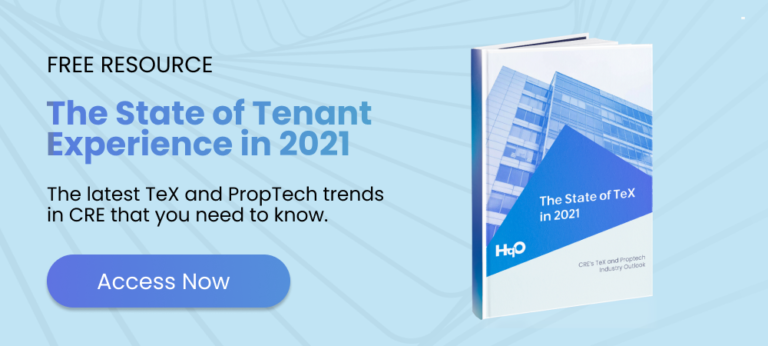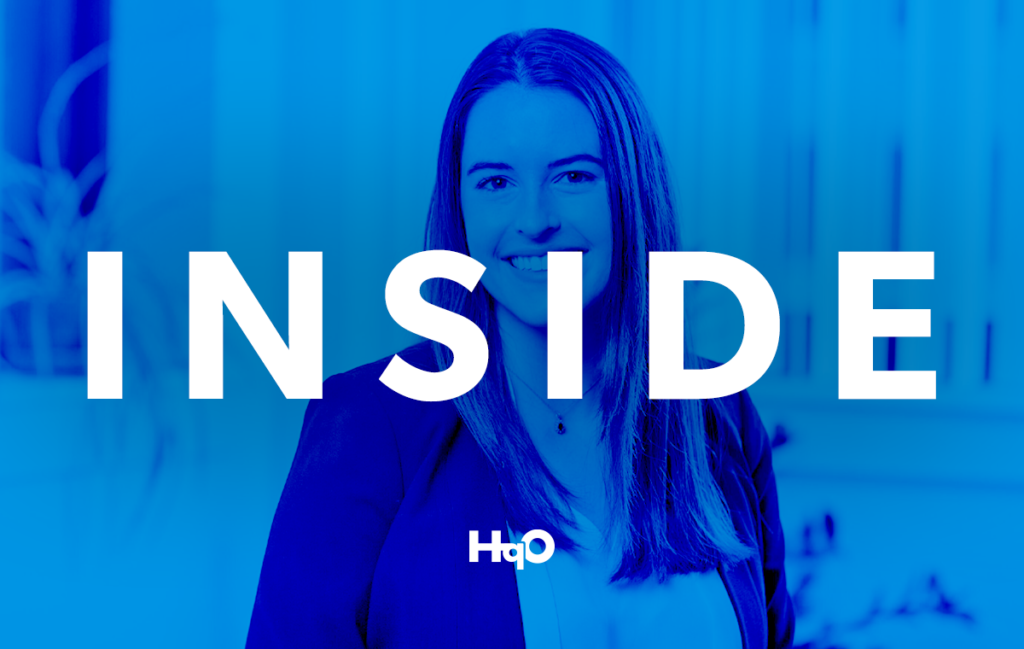Tenant experience technology has become the force bringing commercial real estate (CRE) leaders and property teams closer to their building occupants than ever before. The rise of tenant experience can not only be leveraged to create new and exciting engagement opportunities for tenants, but also to collect meaningful data on what building occupants really want, and how they really use a given space. In the modern commercial real estate landscape, it will serve as the biggest differentiator between your building and everyone else’s.
Now that we have the tools to bring us closer to our tenants, it’s no surprise that the people in our buildings are really the true drivers of value for our buildings. Thus, by investing in tenants, you are not only creating value for them, but also for your assets and portfolio. At the end of the day, every office should be a reflection of its occupants, meaning that investing in their needs and experiences will entice the workforce to use your space no matter where they work, as well as highlight building performance and offerings opportunities based on real-time feedback and communication.
When it comes to tenant experience, there are two key investments you can make to tackle the obstacles of attracting and retaining tenants, fragmentation, and differentiation: 1) your building’s technology stack, and 2) your building’s programming and events. Wondering what this looks like, why you need to budget for tenant experience software, and how to do it? We’ll talk through all you need to know.
The “Art” of Programming
At HqO, we often talk about taking an “art and science” approach to our work. First, let’s start with the “art” side or your building’s programming initiatives. When it comes to thinking about office programming, there are a few key considerations to take into account:
- It starts with taking a step back and thinking about how things have been done traditionally in CRE. Landlords and property teams used to hold one or two “blockbuster” events per quarter, which are large events that happen over the course of a day. Point blank: these events are no longer enough to maintain brand loyalty and generate tenant support. Now, big events are just the tip of the iceberg in terms of what teams can be doing to build out their whole engagement strategies.
- It’s also important to remember that success looks different for every asset. Tenant experience is really about figuring out what your specific tenants love and will be attracted to throughout the year, to help you maintain that core relationship throughout the year.
- Therefore, instead of blowing your whole budget on a few larger events, think about how you can break down those budgets into smaller events and tokens of appreciation — such as a gift card raffle — to keep tenants feeling appreciated, while also collecting more meaningful data to help refine and formulate strategies moving forward.
The “Science” of Technology
Now, let’s discuss the “science” side or your building’s technology. In terms of investments, there are three big buckets you should be thinking about:
- What are the existing technologies in my portfolio? When thinking about your existing technology, it’s important to recognize that there can be costs to replacing existing systems, recurring costs from legacy systems that you are not replacing, and even costs associated with your building’s hardware (such as access control readers and HVAC systems). Ask yourself the following: How does my existing technology play with the costs of new technology? What am I replacing? What am I keeping? How will my building’s hardware impact the new technologies I choose to integrate?
- What do I need in terms of new technology? There is a vast market (over 8,000 proptech companies, in fact) available for every need. It can be quite difficult to navigate this growing ecosystem for new adopters of technology. Therefore, you should always first determine exactly what is important to your specific building population and asset strategy before you start making decisions.
- Are all these systems interoperable? Nothing happens in a vacuum. So, it’s important to remember that having both your building’s existing and new technologies work together in harmony will be vital to avoiding additional costs, ensuring communication between systems, and creating frictionless experiences throughout your building.
An effective tenant experience strategy will ensure that the art and science aspects of your office work together in concert, since your building’s technology should help you take a data-driven approach to your building’s programming.
How to Budget: Don’t Put All Your Eggs in One Basket
When determining how to budget for tenant experience technology, you need to make sure that your strategies remain iterative and flexible. After all, you can’t just focus on one investment, set it, and then forget it. Instead, you need to adopt a data-driven mindset that will empower you to continue learning about your tenants’ changing needs, and prepare you to be able to address those needs as they come.
With this in mind, both your building’s programming and technology sides will require the same type of mindset for budgeting: doing what has traditionally been done in the past is no longer acceptable for a modern workforce, and being willing to break old habits will be the key to your success.
For programming, you need to focus on the optimization of your budgets. More specifically, you need to steer away from preset budgets and move towards breaking up budgets into smaller events geared towards tenant appreciation and engagement throughout the year instead. This can be achieved through asking tenants what they really want, through surveys and other tactics that can be put on through a tenant experience app. Opening up this line of communication not only shows tenants that you’re listening, but also gives you the chance to show them that they are heard and valued.
Similarly, on the technology side, it’s important to remain flexible in your thinking and to prove your investments with data. Ask yourself: what can certain technology partners provide in terms of value? Will they create efficiencies, thereby saving time and money? Can they help me collect meaningful data on my building occupants to help me formulate future asset strategies?
Achieving Tenant Experience Results with HqO
Of course, you will then need to find a way to bring your “art and science” approach together, to build a substantial foundation for your portfolio’s long-term success. HqO’s best-in-class technology partner ecosystem can ensure that all office features — from your tech stack to unique digital programming — are available at the click of a button, just like a remote control for your building.
Our vision opens up a whole world of functionalities and capabilities to landlords and property teams, who can now start differentiating assets by providing unique and memorable experiences to tenants by leveraging HqOS™ — the only end-to-end tenant experience operating system for CRE — to provide holistic office solutions. As part of the HqO platform, our advanced data and analytics offering can also collect meaningful data on your building’s tenants and lend way to real-time feedback, benchmarking opportunities, and enhancements to building performance. Together, our functionalities align to establish valuable experiences for you and your tenants.
To learn more about how you can budget for tenant experience, as well as leverage HqOS to your advantage, watch our Budgeting for TeX webinar today!




